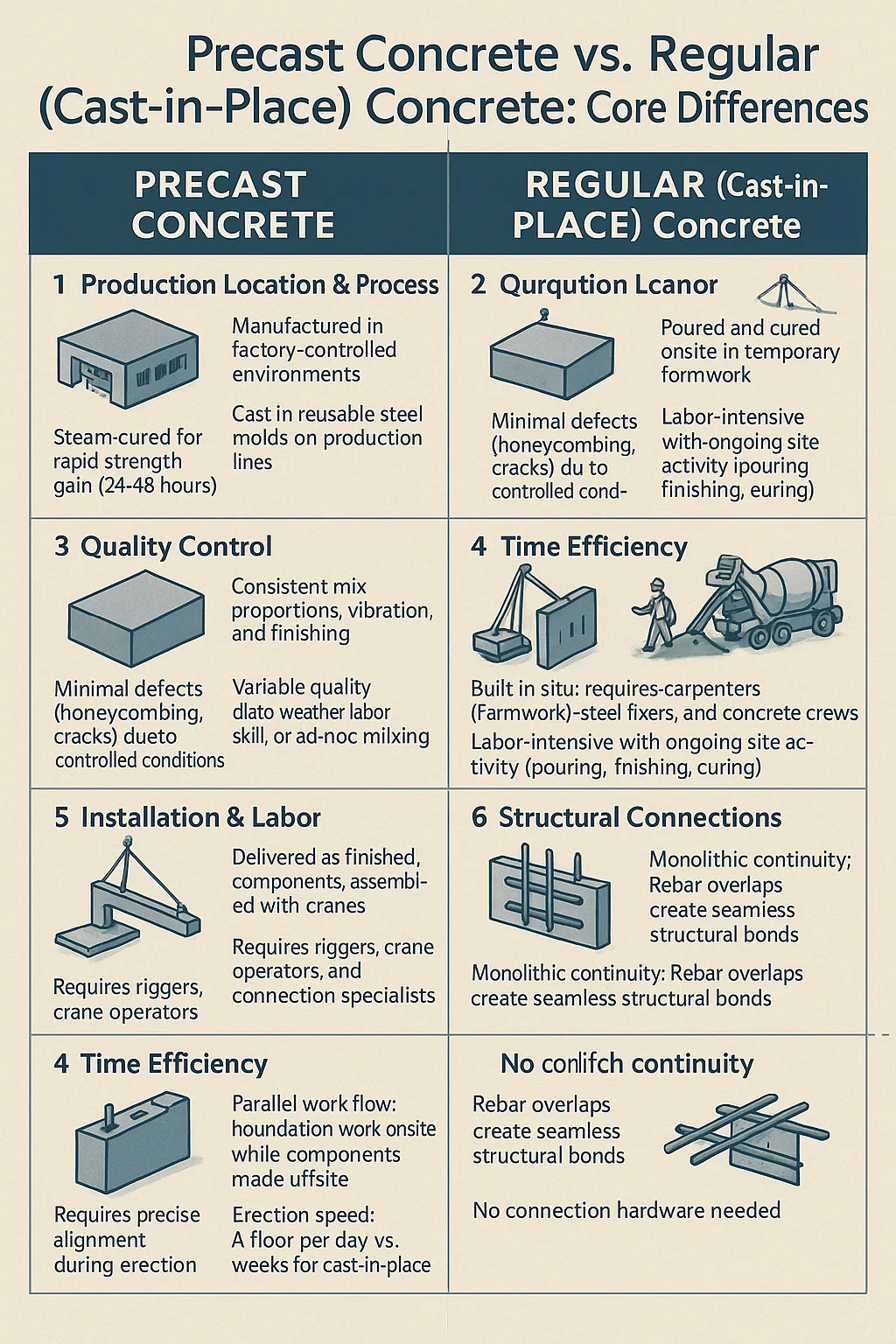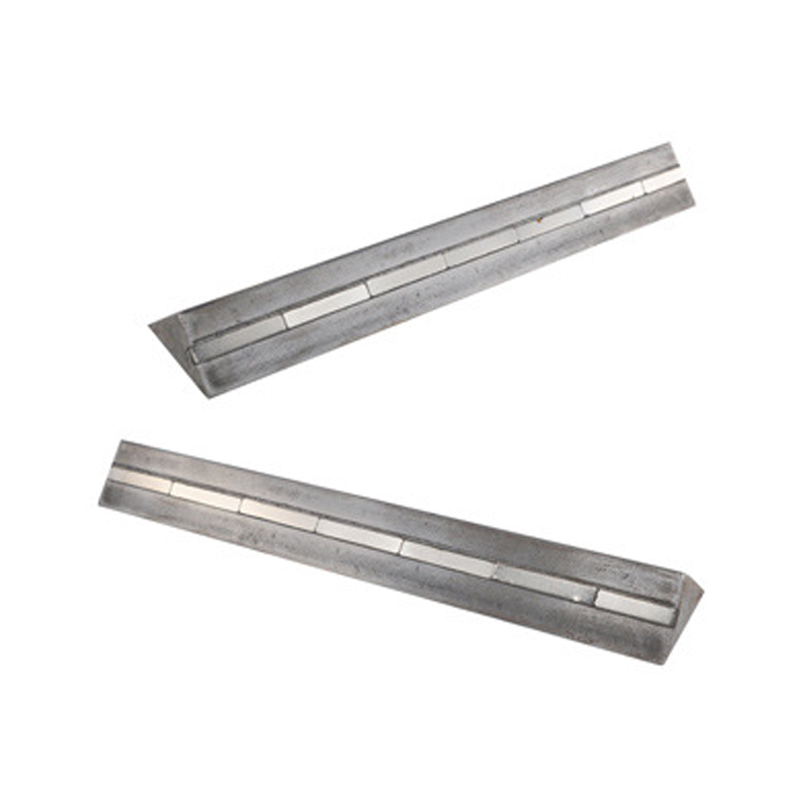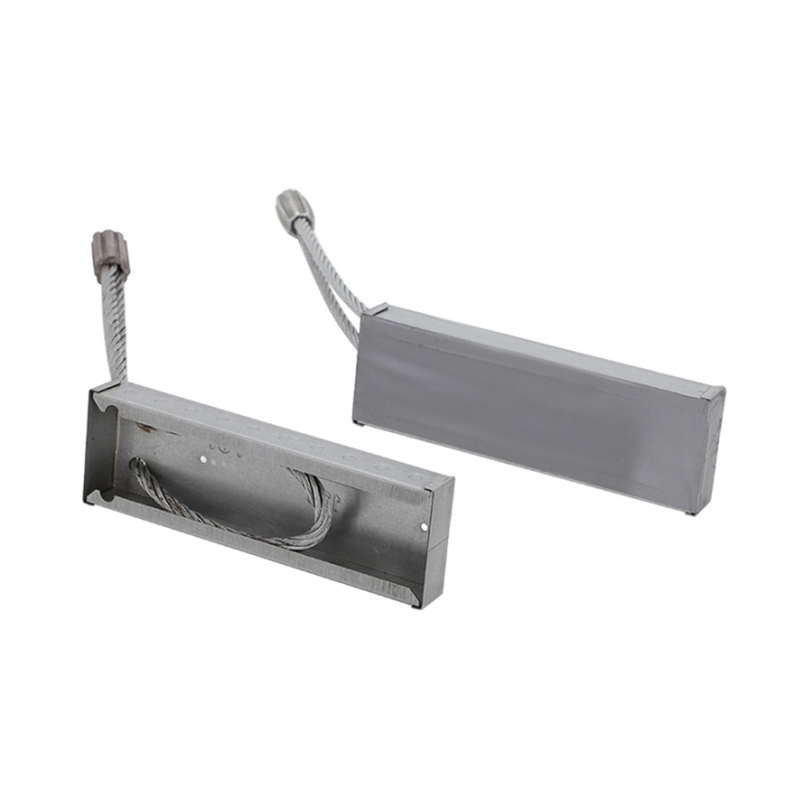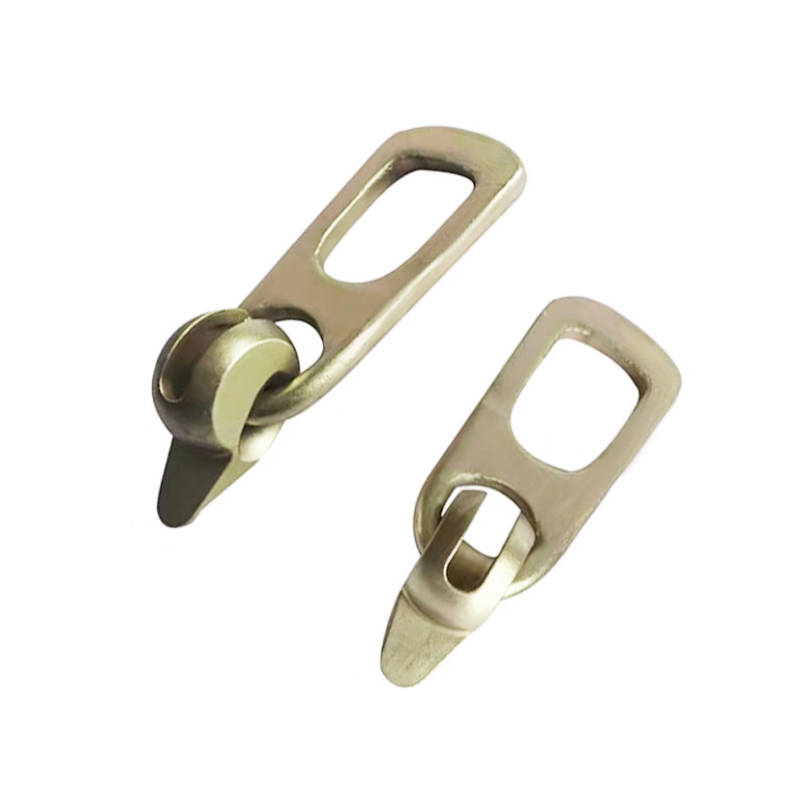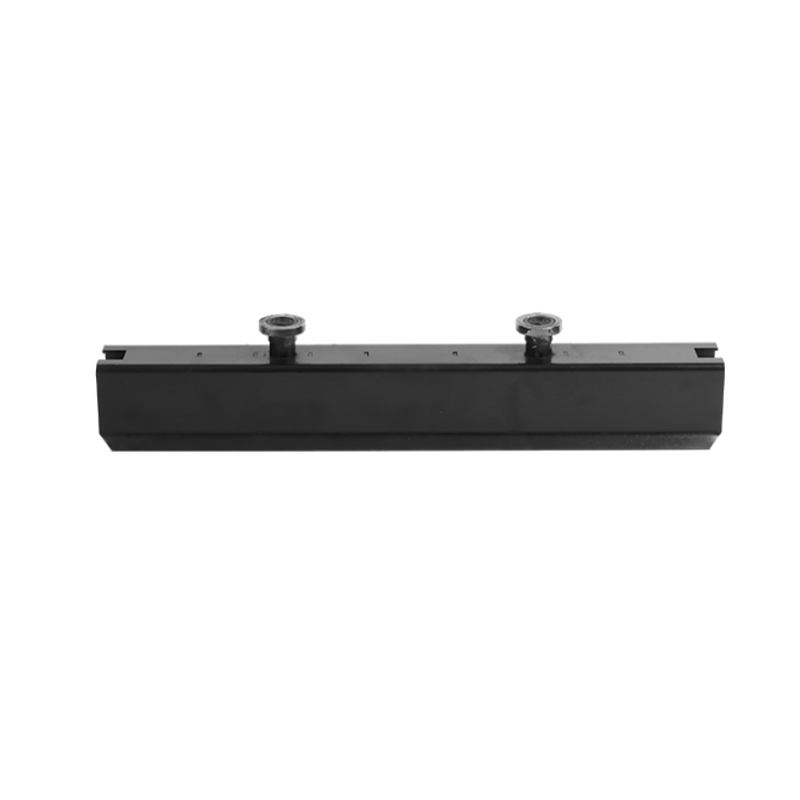Lifting System For Precast Concrete
Precast Concrete vs. Regular (Cast-in-Place) Concrete: Core Differences
1. Production Location & Process
Precast:
Manufactured in factory-controlled environments.
Cast in reusable steel molds on production lines.
Steam-cured for rapid strength gain (24-48 hours).
Regular:
Poured and cured onsite in temporary formwork (wood/steel).
Cures naturally over days/weeks, exposed to weather.
2. Quality Control
Precast:
Consistent mix proportions, vibration, and finishing.
Minimal defects (honeycombing, cracks) due to controlled conditions.
Regular:
Variable quality due to weather, labor skill, or ad-hoc mixing.
Risk of cold joints, poor consolidation, or curing issues.
3. Installation & Labor
Precast:
Delivered as finished components; assembled with cranes.
Requires riggers, crane operators, and connection specialists.
Regular:
Built in-situ: requires carpenters (formwork), steel fixers, and concrete crews.
Labor-intensive with ongoing site activity (pouring, finishing, curing).
4. Time Efficiency
Precast:
Parallel workflow: Foundation work onsite while components made offsite.
Erection speed: A floor per day vs. weeks for cast-in-place.
Regular:
Linear workflow: Formwork → rebar → pour → cure → strip forms.
Weather delays extend timelines significantly.
5. Structural Connections
Precast:
Relies on mechanical joints (bolts, welded plates, grouted sleeves).
Requires precise alignment during erection.
Regular:
Monolithic continuity: Rebar overlaps create seamless structural bonds.
No connection hardware needed.
6. Design Flexibility
Precast:
Limited to standardized shapes (costly custom molds).
Hard to modify after production.
Regular:
Unrestricted shapes/sizes (formwork built onsite).
Adjustable during construction.
7. Site Impact
Precast:
Clean, quiet sites; minimal waste/rework.
Heavy transport access and crane pad space required.
Regular:
Noisy, messy sites (formwork, mixing, pumping).
Flexible for confined or remote locations.
8. Cost Drivers
Precast:
High factory/mold costs; economical for repetitive projects.
Savings from reduced labor/time onsite.
Regular:
Lower upfront costs; expensive for complex/long-duration jobs.
Labor, formwork, and delay risks increase expenses.
9. Durability & Finish
Precast:
Superior surface finishes (architectural textures, exposed aggregates).
Optimized curing → denser, more durable concrete.
Regular:
Finish quality depends on carpenter/formwork skill.
Variable curing may reduce long-term durability.
10. Risk Management
Precast:
Factory safety: Reduced fall/electrical risks.
Site risks: Crane operations, lifting errors.
Regular:
Onsite hazards: Formwork collapses, wet concrete handling, rebar impalement.
When to Choose Which
| Scenario | Preferred Method | Why |
|---|---|---|
| Tight urban site | Precast | Less onsite activity; faster assembly |
| Custom organic architecture | Regular concrete | Flexible formwork for curves/unique shapes |
| High-rise cores | Hybrid (precast + cast-in-place) | Precast walls + cast-in-place joints for seismic resilience |
| Remote location | Regular concrete | Avoid transport/logistics costs |
| Repetitive structures (parking, schools) | Precast | Mass production cuts costs/time |
